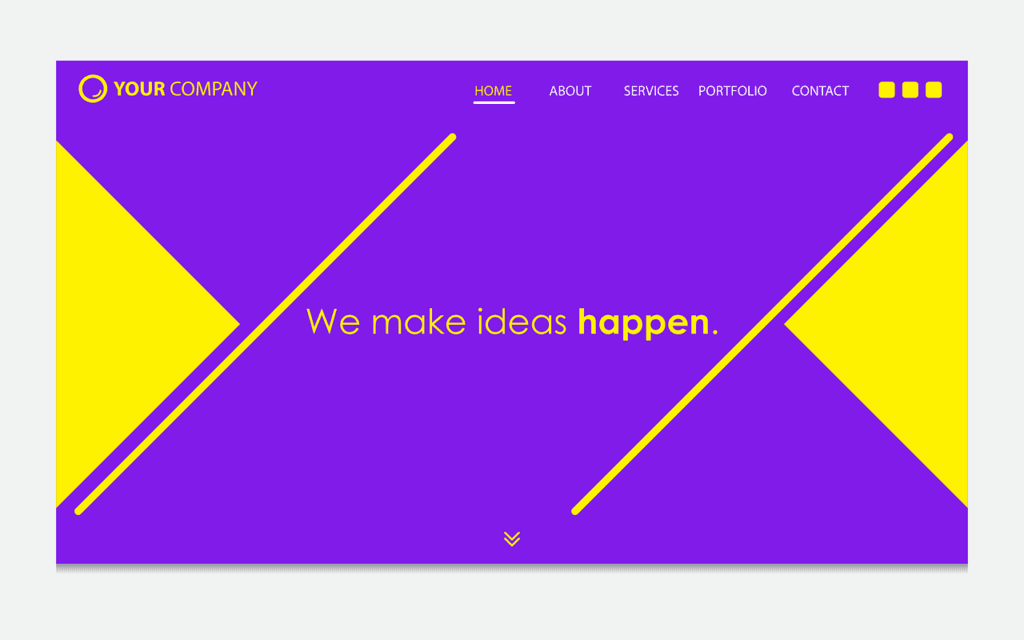This Article has been revised, edited and added to, by Poulomi Chakraborty.
- The Symphony of Clarity and Accessibility
- Clarity in Content
- Navigation Ease
- Embracing Semantic Clarity in Content Strategy
- Architecting Intuitive Navigation Schemes
- Leveraging Advanced Accessibility Technologies
- Enhancing User Understanding with Interactive Visual Aids
- Continuous Improvement through User Feedback Loops
- The Harmonious Blend of UX and SEO
- Personalization – The Masterstroke
- Mobile Responsiveness – A Non-Negotiable
- Interaction and Engagement – The Focal Points
- Interactive Elements
- Content Engagement
- Cultivating a Community-Centric Platform
- Harnessing the Power of Gamification
- Leveraging Advanced Analytics for Personalized Interactions
- Enhancing User Engagement Through Interactive Content
- Optimizing for Voice Search and Virtual Assistants
- A New Paradigm in User Engagement
- Trust and Credibility – The Pillars
- User-Centric SEO – The New Norm
- User Feedback Integration
- Analytical Approach
- Integrating Behavioral Insights for Enhanced UX
- Prioritizing Content Relevance and Value
- Enhancing User Interactions with AI and Machine Learning
- Fostering Accessibility and Inclusivity
- Optimizing for Voice Search and Conversational Queries
- The Future of SEO is User-Centric
- Visual Appeal Meets Functional Elegance
- Aesthetically Pleasing Yet Functional
- Infographics and Visual Data
- Embracing Minimalism for Maximum Impact
- Leveraging the Latest in Web Design Technology
- Incorporating Data Visualization for Enhanced Comprehension
- Ensuring Consistency Across All Touchpoints
- Prioritizing Speed and Responsiveness
- The Art and Science of Web Design
- Content Readability and Accessibility
- Progressive Enhancement – The Forward Leap
- Conclusion
Navigating the intersection where user experience (UX) meets SEO is akin to crafting a symphony where each note, chord, and melody is meticulously composed to create a harmonious, engaging, and intuitive audience experience. In the realm of financial services, this intersection is crucial, marred by the complexity of financial products, the diversity of user needs, and the stringent regulatory landscape. “UX Design Principles for Financial SEO” is not just a guide but a deep dive into crafting digital experiences that not only rank high in search engine visibility but also in user satisfaction and engagement.
In the world of finance, where the cold, hard data meets the warm, intuitive touch of human-centric design, the role of UX is paramount. It transcends the boundaries of aesthetic appeal, delving into the realms of usability, accessibility, and intuitive design, each a pivotal element in the intricate dance of financial SEO. Users are seeking not just information but experiences – seamless, intuitive, and personalized pathways that guide them through the complex labyrinths of financial decision-making.
In this article, we’ll weave through the intricate corridors of UX principles meticulously tailored for financial SEO. It’s a journey where art meets science, intuition aligns with data, and user satisfaction becomes the cornerstone of search engine visibility. Each principle, insight, and strategy is chiseled from the confluence of technology, psychology, and financial acumen, crafted to empower financial service providers to not just be seen and heard but to resonate and engage.
The Symphony of Clarity and Accessibility

In the realm of financial services, where the intricacies of products and regulations often cloud the user’s journey, the principles of clarity and accessibility not only serve as the foundation of user experience (UX) design but also as pivotal elements in enhancing Search Engine Optimization (SEO). This section delves deeper into strategic and actionable advice, particularly tailored for startup founders, aiming to bridge the gap between user expectations and digital deliverability.
Clarity in Content
In the financial ecosystem, complexity is a given. Yet, the magic lies in unfolding this complexity with striking clarity. Content should be crafted to enlighten, not overwhelm. Every piece of information, whether it’s about investment options, insurance policies, or loan terms, should be articulated with precision, simplicity, and relevance.
Navigation Ease
A user’s journey through a financial website should be as intuitive as a well-rehearsed melody. Navigation should be seamless, with each click, scroll, or swipe intuitively leading users to their desired destination. Accessibility is not an afterthought but woven into the very fabric of the design, ensuring inclusivity and ease for all users.
Embracing Semantic Clarity in Content Strategy
The quest for clarity begins with a content strategy that speaks the language of your audience. Financial jargon, while commonplace in the industry, can alienate or confuse potential customers. Therefore, semantic clarity becomes not just a preference but a necessity.
Implement a content strategy that leverages natural language processing (NLP) techniques to ensure your website’s content is easily understandable, engaging, and, most importantly, findable. Utilize tools to analyze keyword relevance and user intent, ensuring that the content not only resonates with your audience but also aligns with the queries leading them to your digital doorstep.
Architecting Intuitive Navigation Schemes
The architecture of your website’s navigation is the roadmap guiding users through their financial journey. An intuitive navigation scheme is characterized by its ability to anticipate user needs, offering pathways that lead to information or actions the user finds valuable.
Consider employing AI-driven analytics to gather insights on navigation patterns, optimizing the user flow based on real user behavior. This adaptive approach not only enhances user experience but also signals to search engines the relevance and user-centric nature of your site, a factor increasingly considered in search rankings.
Leveraging Advanced Accessibility Technologies
Accessibility should be interwoven into the fabric of your digital presence, ensuring that all users, regardless of their abilities, can navigate, understand, and interact with your site. This involves more than adhering to standards; it’s about embracing advanced technologies such as voice navigation, screen readers, and keyboard-only navigation pathways.
Tools like AI-powered accessibility overlays can dynamically adjust your site to meet a wide range of needs, ensuring compliance and enhancing the user experience for a broader audience.
Enhancing User Understanding with Interactive Visual Aids
In financial services, concepts and products can be complex. Interactive visual aids, such as dynamic graphs, animated infographics, and explainer videos, can demystify these complexities, enhancing understanding and engagement.
These tools not only make your content more accessible but also more shareable, increasing your site’s visibility and backlink profile. Furthermore, incorporating schema markup for these visual aids can enhance your content’s discoverability, making it more likely to be featured in rich snippets and other search engine enhancements.
Continuous Improvement through User Feedback Loops
A commitment to clarity and accessibility is a commitment to continuous improvement. Establish robust mechanisms for collecting and analyzing user feedback, using this data to drive iterative enhancements to your site.
This could involve regular user testing sessions, feedback surveys, and monitoring social media channels for user comments and concerns. Actively engaging with your user base in this way not only improves your site over time but also builds a community of users who feel valued and understood.
The Harmonious Blend of UX and SEO
By the principles of clarity and accessibility, startups in the financial sector can create a symphony of user experiences that resonate on a deeper level. This strategic approach goes beyond surface-level adjustments, embedding these principles into the very DNA of your digital presence.
It’s a holistic strategy that recognizes the interplay between UX and SEO, understanding that in the digital age, the success of financial services hinges not just on being seen but on being understood and valued. In this narrative, every click, every interaction, and every piece of content plays a part in a larger story—one that speaks of trust, clarity, and accessibility.
Personalization – The Masterstroke

In an era where users are bombarded with generic content, the power of personalization in the financial sector cannot be overstated. It’s a masterstroke that can set a startup apart in a crowded market.
Tailored Experiences
In the world where data is abundant, personalization emerges as the masterstroke. Financial SEO is not just about being found but about resonating. User experiences should be meticulously tailored, echoing the unique needs, preferences, and behaviors of each visitor.
Data-Driven Insights
Harnessing data analytics to glean insights into user behaviors, preferences, and pain points is pivotal. These insights become the brushstrokes in painting personalized experiences, where content, recommendations, and interactions are tailored to resonate with individual users.
Crafting Dynamic User Profiles
The foundation of any personalization strategy lies in understanding who your users are. Dynamic user profiles go beyond basic demographic information, incorporating user behavior, preferences, and interactions with your site.
Implement machine learning algorithms to analyze user data in real time, allowing for the adaptation of content, recommendations, and offers to match evolving user profiles. This level of personalization makes users feel understood on an individual level, increasing engagement and loyalty.
Intelligent Content Curation and Recommendation
With the wealth of financial information available, users often feel overwhelmed and disconnected. Intelligent content curation and recommendation systems can address this by presenting users with content that matches their interests, needs, and financial goals.
Use predictive analytics to anticipate user needs based on their current and past interactions, curating content that speaks directly to them. This strategy not only enhances user experience but also increases the time spent on your site, a key factor in SEO rankings.
Personalized User Journeys
Every user is on a unique financial journey. Tailoring this journey on your platform can dramatically enhance user satisfaction and engagement. Implement A/B testing and user journey analytics to understand the most effective pathways for different user segments.
Customize these pathways with personalized messages, prompts, and calls to action, guiding users through a journey that feels uniquely theirs. This level of personalization reinforces the value your platform offers, encouraging deeper engagement and positive SEO outcomes through increased user retention and decreased bounce rates.
Real-Time Personalization Engines
In the fast-paced world of finance, real-time personalization can be a game-changer. Utilize real-time data processing to adapt the user experience as interactions occur. This could mean offering personalized financial advice based on recent market movements or adjusting the interface during high-volume trading periods.
Real-time engines require robust technological infrastructure but offer unparalleled opportunities for personalization, setting your startup apart as a leader in user-centric innovation.
Building Trust Through Personalized Security
In the financial sector, trust is paramount. Personalizing the user experience extends to security measures, ensuring that users feel their data is protected. Offer personalized security options, such as biometric authentication or customizable privacy settings, allowing users to tailor their security experience.
Communicate these personalized security measures clearly, reinforcing the perception of your platform as not only innovative but also deeply committed to user privacy and security.
The Art of Personalization in Finance
The art of personalization in the financial sector is about understanding and anticipating the needs of each user, crafting experiences that not only meet but exceed their expectations.
For startups, embracing advanced personalization techniques represents an opportunity to distinguish themselves in a competitive landscape. It’s not just about technology; it’s about creating a culture of user-centricity, where every decision is informed by a deep understanding of the user’s needs and desires.
In this landscape, personalization becomes not just a masterstroke but a fundamental pillar of a startup’s value proposition, weaving together the threads of user satisfaction, engagement, and SEO success into a cohesive and compelling narrative.
Mobile Responsiveness – A Non-Negotiable
In today’s digital landscape, where the majority of internet traffic comes from mobile devices, mobile responsiveness is not just a requirement; it’s the linchpin of any successful online strategy, especially in the finance sector. This section offers startup founders strategic insights and actionable advice to not just meet, but exceed modern standards of mobile web design, ensuring their platforms not only captivate users but also rank favorably in search engine results.
Adaptive Design
With the majority of users accessing financial services via mobile devices, an adaptive design that offers optimal viewing and interaction experiences across diverse device sizes is non-negotiable. It’s about ensuring that the melody of user experience flows seamlessly, whether it’s heard on a smartphone, tablet, or desktop.
Speed and Efficiency
Load time, especially for financial websites where users seek quick information and transactions, is crucial. The efficiency of design and speed of loading become fundamental SEO elements. Google, and other search engines, prioritize websites that offer users speedy and efficient experiences.
Prioritizing Mobile-First Design
Adopting a mobile-first approach is the cornerstone of contemporary web development. This methodology involves designing for the smallest screen first and scaling up to larger screens, ensuring that the core content and functionality remain accessible and user-friendly across all devices.
For financial websites, where transactions and data access need to be secure and seamless, mobile-first design ensures that your platform is inherently adaptable to the changing landscape of device usage.
Engage with web development frameworks that are responsive by nature and test your designs across a spectrum of mobile devices to guarantee uniform excellence in user experience.
Implementing Progressive Web Apps (PWAs)

Progressive Web Apps (PWAs) represent a significant leap forward in mobile web technology, blending the best features of mobile sites and native applications. For financial startups, PWAs offer a strategic advantage by providing fast, reliable, and engaging user experiences, irrespective of network conditions.
Implementing PWA technology means your site loads instantly, is accessible offline, and can utilize device-specific features like push notifications, creating a more app-like experience directly from the web browser. This approach not only boosts user engagement but also positions your platform favorably in search engines that prioritize fast and interactive sites.
Streamlining User Interactions
In the context of mobile responsiveness, simplifying user interactions becomes crucial. Financial services involve complex transactions and information dissemination, which can be overwhelming on smaller screens.
Streamline these interactions by minimizing the need for typing, using touch-friendly form elements, and ensuring that calls to action are prominently placed and easily tappable. Simplification also means optimizing website menus and navigation for one-handed use, recognizing that mobile users often prioritize speed and convenience.
Accelerating Page Load Speed
Page load speed is a critical factor in user satisfaction and SEO rankings, especially on mobile devices. Users expect fast, if not instant, access to information and services. Optimize images, leverage browser caching, and minimize code to accelerate page speeds on your financial platform.
Additionally, consider implementing Accelerated Mobile Pages (AMP) for key sections of your site to further boost speed and performance. AMPs are designed to load almost instantly, providing a streamlined user experience that can significantly reduce bounce rates and improve search engine visibility.
Adapting to Future Technologies
As mobile technology continues to evolve, so too must your platform’s responsiveness. This means not only adapting to current standards and practices but also anticipating future trends in mobile design and usage.
Stay informed about emerging technologies and user interface patterns, incorporating them into your platform where they add value. Consider the implications of new screen sizes, foldable devices, and 5G internet speeds, ensuring your site remains at the forefront of mobile user experience.
The Imperative of Mobile Excellence
For financial startups, excellence in mobile responsiveness is not just about technical compliance; it’s about embracing a user-centric philosophy that recognizes the mobile device as the primary window through which most users will engage with digital services.
By prioritizing mobile-first design, leveraging modern technologies like PWAs, streamlining user interactions, accelerating page speeds, and staying ahead of technological trends, startups can ensure their platforms are not just accessible, but indispensable to their mobile-savvy audience.
In this dynamic digital era, mobile responsiveness transcends its role as a non-negotiable requirement, becoming a strategic asset that drives user engagement, satisfaction, and search engine success.

Related: Check out our free SEO suite

Interaction and Engagement – The Focal Points
In the fiercely competitive financial sector, fostering deep interaction and engagement with users can significantly differentiate a startup from its rivals. This section delves into innovative strategies and actionable insights, designed to captivate and retain users while simultaneously boosting SEO. This section offers startup founders a blueprint for crafting experiences that are not just interactive but truly memorable.
Interactive Elements
The incorporation of interactive elements can significantly elevate user engagement. For financial websites, tools like calculators, interactive charts, and personalized recommendations can transform passive browsing into active engagement, which is a significant SEO booster.
Content Engagement
Beyond the interactive tools, content engagement remains pivotal. Engaging content is not about verbosity but value. In the financial realm, content that educates, informs, and empowers the audience, complemented by visual elements, enhances user engagement and SEO concurrently.
Cultivating a Community-Centric Platform
Engagement transcends the boundaries of traditional user interaction by fostering a sense of community among users. Consider integrating community features such as forums, user-generated content, and Q&A sections specifically tailored to the financial services you offer.
This approach not only encourages users to spend more time on your platform but also generates fresh, SEO-friendly content. Implement moderation tools and community guidelines to maintain the quality and relevance of interactions, ensuring that the community remains a valuable asset to both users and your SEO strategy.
Harnessing the Power of Gamification
Gamification is a potent tool for increasing user engagement and interaction on financial platforms. By introducing elements such as points, badges, leaderboards, and challenges, you can transform mundane financial tasks into exciting and rewarding experiences.
This strategy not only makes the financial journey more engaging for users but also encourages repeated visits and interactions, positively impacting your site’s SEO metrics.
Ensure that gamification elements are seamlessly integrated with your platform’s design and user experience, enhancing rather than distracting from the financial services offered.
Leveraging Advanced Analytics for Personalized Interactions
Advanced analytics play a crucial role in tailoring interactions to the preferences and behaviors of individual users. Utilize machine learning algorithms to analyze user data and identify patterns, enabling the delivery of personalized content, product recommendations, and notifications.
This level of personalization makes users feel uniquely understood and valued, increasing engagement and loyalty. Furthermore, personalized interactions keep your content dynamic and relevant, improving your platform’s search engine rankings through enhanced user satisfaction and engagement metrics.
Enhancing User Engagement Through Interactive Content
Interactive content such as quizzes, polls, and financial calculators can dramatically increase user engagement on your platform. These tools not only provide value to users by offering insights into their financial health and preferences but also encourage active participation.
Interactive content can generate detailed user data, offering insights into user needs and preferences that can inform further content creation and personalization efforts. Additionally, such content is highly shareable, increasing your platform’s visibility and backlink profile, which are critical factors in SEO.
Optimizing for Voice Search and Virtual Assistants
With the rising prevalence of voice search and virtual assistants, optimizing for voice queries is becoming increasingly important. Incorporate natural language processing (NLP) techniques to understand and respond to voice searches effectively.
Develop content that answers common financial questions in a conversational tone, making it more likely to be featured in voice search results. Additionally, consider integrating with virtual assistants to offer voice-activated financial services, enhancing accessibility and user engagement.
A New Paradigm in User Engagement
In the digital age, interaction and engagement are the currency of online success, particularly in the financial sector. By building a community-centric platform, leveraging gamification, utilizing advanced analytics for personalization, creating interactive content, and optimizing for voice search, startups can forge deeper connections with users.
These strategies not only enhance user experience but also significantly improve SEO performance, driving visibility, and success in the competitive online landscape. This holistic approach to interaction and engagement marks a new paradigm, where financial platforms are not just visited but truly experienced and valued by their users.
Trust and Credibility – The Pillars

In the complex world of finance, trust and credibility are not just pillars; they are the very foundation upon which successful digital platforms are built. This section delves into nuanced strategies and forward-thinking practices that startup founders can employ to not only establish but also elevate the levels of trust and credibility in their digital offerings. Through a blend of technological innovation, transparent communication, and user-centric design, financial websites can transcend traditional boundaries, fostering a deep sense of security and reliability among users while enhancing SEO.
Security Emphasis
In the financial sector, the emphasis on security cannot be overstated. Trust is not an abstract notion but is built on tangible elements like website security, privacy policies, and transparent practices. These elements not only build user trust but also influence search engine rankings.
Testimonials and Reviews
Incorporating customer testimonials and reviews enhances credibility. In the financial SEO landscape, these elements serve dual purposes – they augment user trust and contribute rich, diverse, and fresh content that boosts SEO.
Establishing Transparency as a Core Value
Transparency in the financial industry goes beyond clear pricing and terms of service; it involves an open dialogue with your user base about your platform’s operations, data usage, and security measures.
Create a dedicated transparency portal where updates, changes, and data practices are regularly communicated in an understandable manner. Such openness not only builds trust with your users but also positively impacts your SEO by generating fresh content and encouraging longer site visits.
Advancing Data Security and Privacy
With the increasing frequency of data breaches and privacy concerns, robust security measures have become a crucial trust signal for users and search engines alike. Implement state-of-the-art encryption for data transmission, secure login methods, and regular security audits.
Displaying security badges and certifications prominently on your site reassures users and signals to search engines that your platform is a credible and safe source of financial information and services.
Leveraging Blockchain for Enhanced Trust
Blockchain technology offers unparalleled opportunities for enhancing trust in financial transactions and information storage. By integrating blockchain to manage transactions or secure user data, startups can provide a verifiable and immutable record that enhances transparency and trustworthiness.
Highlighting the use of blockchain on your platform can distinguish your offering in the marketplace and contribute positively to your SEO by aligning with current trends in technology and security.
Fostering a Culture of User Reviews and Testimonials
User reviews and testimonials are powerful tools for building credibility. Encourage your satisfied customers to share their experiences on your platform and third-party review sites.
Utilize these testimonials strategically on your website, ensuring they are visible and reflect a genuine user experience. This strategy not only builds potential customers’ trust but also creates fresh, relevant content that search engines value.
Committing to Ethical Financial Practices
In finance, where the potential for misinformation and exploitation exists, committing to ethical practices is paramount. Clearly outline your ethical guidelines and ensure all content, advice, and offerings adhere to high standards.
Engage in initiatives that demonstrate your commitment to financial literacy and consumer protection. Such commitments, when communicated effectively on your platform, can significantly enhance trust among users and improve your SEO by establishing your site as an authoritative source in the financial sector.
The Keystone of Digital Finance
Trust and credibility are the keystones of any successful financial platform. In a sector where the stakes are inherently high, the importance of establishing a solid foundation of trust cannot be overstated. F
or startups, this means going beyond basic security measures and user testimonials to embedding transparency, advanced technology, and ethical practices into the fabric of their digital presence.
By doing so, they not only foster a loyal user base but also enhance their visibility and ranking in search engine results, securing their place in the competitive digital finance landscape.
User-Centric SEO – The New Norm
In the digital realm, particularly within the financial sector, SEO has evolved from a focus on keywords and backlinks to a sophisticated, user-centric approach. This paradigm shift underscores the importance of crafting user experiences that not only satisfy search engine algorithms but also, and more importantly, meet the evolving needs of users. This section delves into strategic insights and actionable advice designed to empower startup founders. Through a holistic integration of UX and SEO, financial websites can achieve superior visibility, user engagement, and trust.
User Feedback Integration
The integration of user feedback to continually refine the UX is a pivotal aspect of modern SEO. It’s a dynamic and iterative process where user feedback becomes the cornerstone for enhancements, ensuring the UX remains aligned with evolving user expectations.
Analytical Approach
Leveraging analytics to dissect user behaviors, engagement patterns, and preferences is intrinsic to crafting user-centric SEO strategies. It’s about transforming data into insights and insights into actionable enhancements that boost both UX and SEO.
In this intricate milieu, where financial complexity meets digital simplicity, and where user expectations align with SEO imperatives, a meticulously crafted UX is not an option but a necessity. It’s a silent symphony that plays in the background, unnoticeable yet indispensable, complex yet intuitive, technical yet human.
Integrating Behavioral Insights for Enhanced UX
The cornerstone of user-centric SEO is a deep understanding of user behavior. Leveraging data analytics and behavioral insights allows startups to tailor their UX and content strategy to the real-world needs and preferences of their audience.
Implement advanced tracking tools and analytics to monitor user interactions, dwell time, and journey paths on your site. Use this data to refine your UX, focusing on reducing bounce rates and enhancing engagement, which in turn signals to search engines the quality and relevance of your site.
Prioritizing Content Relevance and Value
In a user-centric SEO strategy, content must go beyond keyword optimization to offer real value to the user. Financial information can be complex and overwhelming; your content should simplify this complexity, offering clear, actionable insights tailored to your audience’s needs.
Employ natural language processing (NLP) and semantic analysis to ensure your content aligns closely with user queries, answering their questions in an informative and accessible manner. This approach not only improves your search engine rankings but also establishes your site as a trusted resource in the financial community.
Enhancing User Interactions with AI and Machine Learning
The dynamic nature of user preferences and behaviors demands a responsive, adaptable approach to UX design. Incorporating AI and machine learning into your platform can transform the user experience, offering personalized content, recommendations, and services based on individual user data.
This personalized interaction not only improves user satisfaction and engagement but also contributes to a positive SEO outcome by increasing the time spent on site and improving the click-through rate (CTR) from search results.
Fostering Accessibility and Inclusivity
A truly user-centric SEO strategy recognizes the importance of making financial services accessible to all users, including those with disabilities. Ensuring your website is compliant with web accessibility standards (e.g., WCAG) not only broadens your potential audience but also reflects positively on your brand’s values.
Search engines increasingly consider accessibility features as a factor in rankings, making this a strategic priority for enhancing both UX and SEO.
Optimizing for Voice Search and Conversational Queries
As voice search becomes more prevalent, optimizing for conversational queries is a critical aspect of user-centric SEO. This involves creating content that answers questions in a natural, conversational tone and structuring information in a way that is easily digestible by voice search algorithms.
Embrace schema markup to help search engines understand the context and relevance of your content, improving your visibility in voice search results.
The Future of SEO is User-Centric
In the fast-evolving landscape of digital finance, SEO strategies that prioritize the user experience are not just beneficial; they are essential. By embracing a user-centric approach, startups can ensure that their financial platforms are not only visible but also valuable to their target audience.
This holistic integration of UX and SEO goes beyond optimizing for search engines to create meaningful, engaging, and accessible experiences that drive user satisfaction, loyalty, and ultimately, business success.
Visual Appeal Meets Functional Elegance

In the digital age, the aesthetic and functional elements of a website are intertwined, especially in the finance sector where the balance between sophistication and simplicity plays a crucial role in user engagement and retention. This section explores advanced strategies for startup founders to create websites that are not only visually captivating but also supremely functional, enhancing the user experience in ways that significantly boost SEO performance.
Aesthetically Pleasing Yet Functional
Balancing aesthetic allure with functional efficiency is essential. Financial websites, while needing to convey trust and professionalism, should also be visually engaging. The integration of visual elements should not compromise load times or navigation ease, creating a seamless blend that enhances both UX and SEO.
Infographics and Visual Data
In the finance sector, data is king. Utilizing infographics and visual representations can make complex financial data digestible and engaging. This visual engagement not only retains user attention but also contributes to SEO through increased dwell times and social sharing.
Embracing Minimalism for Maximum Impact
The principle of minimalism in web design, characterized by clean lines, uncluttered layouts, and a focus on essential elements, is particularly effective in the finance sector. This approach helps in highlighting key information and calls to action, making the user journey straightforward and free of distractions.
Incorporate whitespace strategically to enhance readability and focus, and select a color palette that reflects your brand’s values while ensuring optimal contrast for text and interactive elements. Minimalism not only elevates the visual appeal but also improves site performance and load times, contributing positively to SEO.
Leveraging the Latest in Web Design Technology
To achieve a perfect blend of visual appeal and functionality, it’s crucial to stay abreast of the latest advancements in web design technology. Explore the possibilities offered by CSS animations, WebGL for interactive data visualizations, and progressive enhancement strategies to ensure a seamless experience across all devices and browsers.
Utilizing these technologies can create an immersive and interactive environment that captivates users, encouraging longer visit durations and more meaningful interactions, both of which are positive signals to search engines.
Incorporating Data Visualization for Enhanced Comprehension
In the finance world, where data reigns supreme, the ability to present complex information in an easily digestible format is invaluable. Invest in custom data visualization tools that can transform dense data into interactive charts, graphs, and infographics.
This not only aids in user understanding but also engages users at a deeper level, encouraging exploration and interaction. Well-executed data visualizations can significantly enhance the shareability of your content, increasing backlinks and improving your SEO.
Ensuring Consistency Across All Touchpoints
A consistent user experience across all platforms and devices is key to marrying visual appeal with functionality. This consistency extends to visual design, content tone, and overall user experience.
Employ a responsive design framework that adapts fluidly to different screen sizes and resolutions, ensuring that your website’s elegance and functionality are preserved regardless of how users access it. Consistency reinforces brand identity, builds trust, and supports a cohesive SEO strategy by reducing bounce rates and improving user satisfaction.
Prioritizing Speed and Responsiveness
The elegance of your website’s design should never come at the cost of its performance. Optimize images, leverage modern coding practices, and consider the use of content delivery networks (CDNs) to ensure that your site loads quickly and runs smoothly on all devices.
Speed and responsiveness are critical factors in both user experience and SEO, with fast-loading sites seeing higher engagement rates and better search engine rankings.
The Art and Science of Web Design
In the realm of financial services, where trust and clarity are paramount, achieving a harmonious balance between visual appeal and functionality is both an art and a science.
By embracing minimalism, leveraging the latest in web design technology, incorporating effective data visualization, ensuring consistency, and prioritizing speed, startups can create financial websites that not only draw users in but also encourage them to stay, explore, and engage.
This strategic approach to web design transcends aesthetic considerations, directly contributing to a superior user experience and enhanced SEO performance, setting the stage for long-term success in the digital marketplace.
Content Readability and Accessibility
In the finance sector, where the complexity of information can be a significant barrier to user engagement, enhancing content readability and accessibility becomes not just a design consideration but a strategic imperative. This section offers startup founders advanced insights into creating content that is not only easy to digest but also universally accessible, ensuring that financial websites cater to a broad audience while optimizing for search engine visibility.
Readability
Ensuring content readability, with clear fonts, contrasting colors, and structured layouts, is pivotal. In the finance world, where information is dense, enhancing readability can significantly boost user engagement and SEO.
Accessibility
Accessibility is not a buzzword but a critical UX element. Ensuring that financial information and tools are accessible to users with disabilities is not just a legal requisite but also boosts SEO by expanding the user base and engagement.
Implementing a Hierarchical Information Structure
The organization of content using a clear hierarchy significantly aids in readability and navigation. Start with a logical structure that guides users through your content, employing H2 and H3 headings to break down information into manageable sections.
This hierarchical approach not only makes content more accessible to users but also allows search engines to better understand and index your pages, improving SEO performance. Use breadcrumbs and a well-thought-out navigation menu to enhance this structure further, making it intuitive for users to find the information they need.
Enhancing Readability through Typography
The choice of typography on your finance website plays a crucial role in content readability. Select fonts that are not only stylistically aligned with your brand but also easy to read on various devices and screen sizes.
Consider the line length, spacing, and font size, ensuring that text is comfortable to read without straining the eyes. Adaptive typography, which adjusts based on the user’s device and viewing conditions, can significantly enhance the reading experience, thereby increasing the time spent on your site—a positive signal for SEO.
Simplifying Financial Jargon
The finance sector is notorious for its use of complex terminology and jargon. While some terms may be unavoidable, simplifying your language wherever possible can make your content more accessible to a broader audience.
Include definitions for terms that may not be widely understood, and consider adding a glossary page that users can refer to. This not only aids in understanding but also enriches your site with keyword-rich content that can improve SEO rankings.
Making Content Accessible to All Users
Accessibility should be a cornerstone of your content strategy, ensuring that all users, regardless of disability, can access and benefit from your information. This includes providing alternative text for images, using accessible tables for data representation, and ensuring that videos have captions and transcripts.
Tools and plugins that assess and enhance website accessibility can be invaluable in this process. Search engines increasingly favor websites that prioritize accessibility, reflecting the broader trend towards an inclusive digital space.
Utilizing Multimedia to Break Down Complex Concepts
Incorporating multimedia elements such as videos, infographics, and interactive tools can make complex financial concepts more understandable and engaging. These elements not only break up text-heavy content, making it more visually appealing and easier to digest, but also provide alternative ways for users to engage with your content.
Optimizing these multimedia elements for SEO, through descriptive filenames, alt text, and structured data, can further enhance your website’s visibility and user engagement.
Elevating Financial Web Content
The strategic enhancement of content readability and accessibility is vital for finance websites aiming to demystify financial information and cater to a diverse audience. By implementing a structured information hierarchy, optimizing typography, simplifying financial jargon, ensuring universal accessibility, and utilizing multimedia elements effectively, startups can create finance websites that not only draw users in but also hold their attention.
This holistic approach to content strategy not only serves the immediate needs of your users but also aligns with broader SEO objectives, paving the way for improved search engine rankings and online visibility in the competitive financial sector.
Progressive Enhancement – The Forward Leap
In the rapidly evolving digital landscape, the principle of progressive enhancement is not just a forward leap; it’s a strategic necessity for finance websites aiming to future-proof their online presence. This section provides startup founders with deeper insights and strategies to implement progressive enhancement in a way that not only anticipates future technological shifts but also solidifies SEO and user experience foundations today.
Future-Proofing Design
UX design should not just cater to the current but be attuned to the future. Progressive enhancement involves designing experiences that are adaptable to future technological advancements and user behavior shifts.
SEO Evolution
SEO is not static. As algorithms evolve, so should the UX design principles. Ensuring that UX enhancements are aligned with evolving SEO algorithms ensures that the financial website remains competitive and visible.
The intricate dance of UX and SEO in the financial sector is akin to a well-rehearsed ballet. Each move, step, and twirl is meticulously choreographed to create a seamless, engaging, and intuitive experience. It’s a silent narrative told through clicks, scrolls, and swipes, where each interaction weaves a story of trust, engagement, and satisfaction.
Building on a Solid HTML Foundation
The journey towards progressive enhancement begins with a solid HTML foundation, ensuring that your content is accessible and semantic out of the box. Start by structuring your website’s content with clean, valid HTML, emphasizing the use of semantic tags that convey meaning to both users and search engines.
This approach guarantees that your website is accessible to users on any device or browser, including those with disabilities, enhancing both user experience and search engine visibility.
Enhancing User Experience with CSS and JavaScript Layers
Once a solid HTML foundation is in place, layer on CSS for styling and layout improvements, followed by JavaScript for advanced functionality and interactivity. This layered approach ensures that your website remains usable and informative even if a user’s browser doesn’t support the latest CSS or JavaScript features.
For SEO, this means your site can be fully crawled and indexed even in its most basic form, while still providing an enhanced experience for users with modern browsers.
Leveraging Cutting-edge Technologies Responsibly
As new technologies emerge, the temptation to implement the latest features can be strong. However, progressive enhancement advocates for the responsible use of cutting-edge technologies. Evaluate new technologies carefully, considering their impact on accessibility, performance, and SEO.
When adopting new features, ensure they enhance the user experience without compromising the usability of your site for users on older platforms. This responsible approach to technology keeps your site at the cutting edge while maintaining a broad user base and search engine compatibility.
Prioritizing Performance Optimization
In the context of progressive enhancement, performance optimization plays a crucial role. Ensure that enhancements do not bog down your site’s speed, as load times are a critical factor in both user experience and SEO rankings.
Employ techniques such as lazy loading, image optimization, and asynchronous loading of JavaScript to keep your site speedy and responsive as you add layers of enhancement. Performance optimization not only improves user satisfaction but also signals to search engines that your site provides a positive user experience.
Continuous Testing and Iteration
Progressive enhancement is an ongoing process, not a one-time implementation. Regularly test your website across a range of devices, browsers, and connection speeds to ensure that enhancements are delivering the intended benefits without detracting from the core experience.
Use A/B testing to gauge the impact of new features on user behavior and SEO performance, and be prepared to iterate based on feedback and analytics data. This culture of continuous improvement ensures that your finance website remains ahead of the curve, offering a superior user experience that evolves with technological advancements and user expectations.
A Strategic Framework for the Future
Adopting progressive enhancement as a strategic framework enables finance startups to create websites that are not only optimized for today’s digital ecosystem but are also prepared for tomorrow’s innovations.
By building on a solid HTML foundation, responsibly layering enhancements, prioritizing performance, and committing to continuous testing and iteration, startups can ensure their online presence is robust, resilient, and ready to adapt to future changes in technology, user behavior, and search engine algorithms.
This forward-thinking approach aligns perfectly with the principles of user-centric design and SEO, paving the way for financial websites that stand the test of time in both functionality and visibility.
Conclusion
The convergence of UX design and SEO in the financial sector is more than a technical integration; it’s an artful amalgamation of user-centric design, intuitive navigation, personalized engagement, and strategic visibility. As we unfurl the intricate tapestry of this guide, each thread woven with insights, principles, and strategies stands as a testament to the seamless dance between user experience and search engine optimization.
In this narrative, SEO is not a solitary journey but a collaborative dance. A dance where the steps of UX design are in harmonious sync with the rhythms of SEO, crafting a symphony that is heard, felt, and resonated across the digital ecosystem. It’s a world where financial complexities are unveiled with elegant simplicity, where data is narrated with engaging storytelling, and where visibility is echoed with credibility.
As we conclude this exploration, we embark on a journey where each principle, strategy, and insight becomes a stepping stone towards a world where financial services are not just seen and heard but experienced and trusted. It’s a world where UX design for financial SEO is not a technical integration but an artful narrative, a narrative that resonates, engages, and endures in the dynamic confluence of finance and technology.
In this narrative, every click tells a story, every engagement echoes trust, and every design element weaves the intricate tapestry of a user experience that transcends the boundaries of screens to touch lives, influence decisions, and shape financial well-being in the digital age.
Read Next:





















